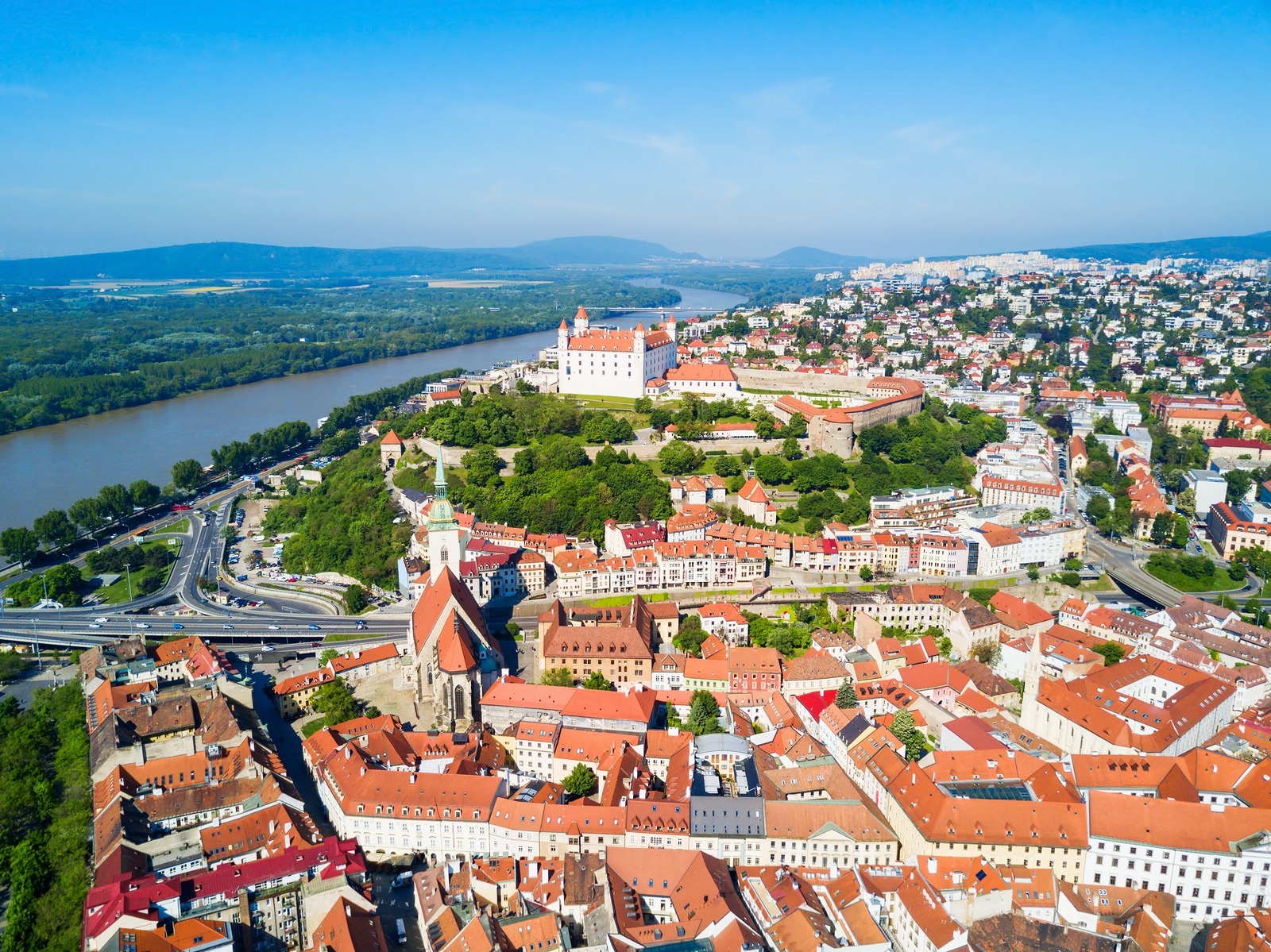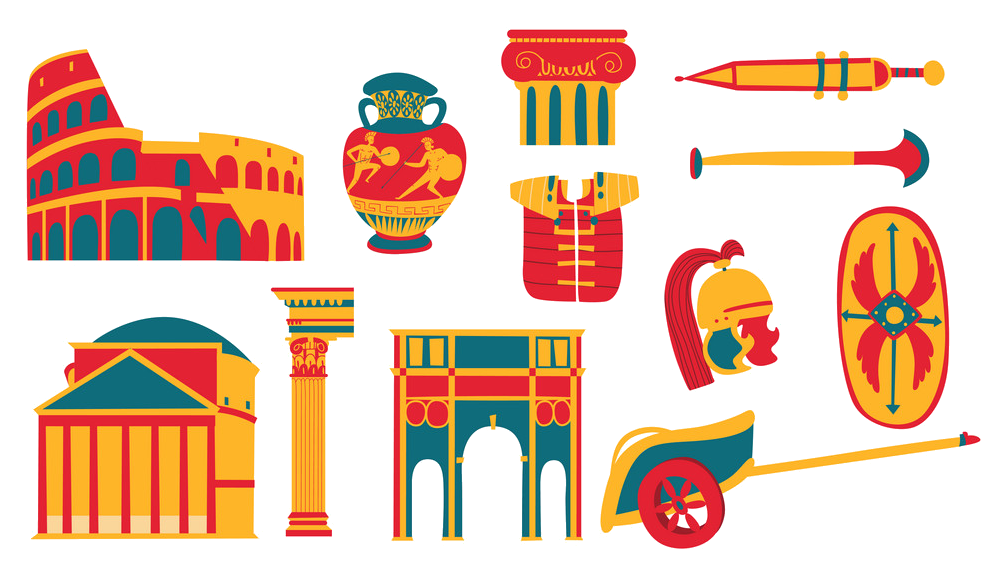(Quelle: Youtube/BeOnMind)

Bratislava ( slowakische Aussprache?/i ['bracɪslava], bis 1919 slowakisch Prešporok, deutsch Pressburg, ungarisch Pozsony) ist die Hauptstadt der Slowakei und mit 429.564 Einwohnern (Stand 31. Dezember 2017) die größte Stadt des Landes. Sie liegt an der südwestlichen Grenze der Slowakei am Dreiländereck mit Österreich und Ungarn und ist damit die einzige Hauptstadt der Welt, die an mehr als einen Nachbarstaat grenzt. Mit rund 55 km Luftlinie haben Bratislava und Wien den geringsten Abstand zweier europäischer Hauptstädte.
slowakische Aussprache?/i ['bracɪslava], bis 1919 slowakisch Prešporok, deutsch Pressburg, ungarisch Pozsony) ist die Hauptstadt der Slowakei und mit 429.564 Einwohnern (Stand 31. Dezember 2017) die größte Stadt des Landes. Sie liegt an der südwestlichen Grenze der Slowakei am Dreiländereck mit Österreich und Ungarn und ist damit die einzige Hauptstadt der Welt, die an mehr als einen Nachbarstaat grenzt. Mit rund 55 km Luftlinie haben Bratislava und Wien den geringsten Abstand zweier europäischer Hauptstädte.
Als politisches, kulturelles und wirtschaftliches Zentrum des Landes ist Bratislava Regierungssitz der Slowakei sowie Standort mehrerer Universitäten, Museen, Theater und weiterer wirtschaftlicher, kultureller und wissenschaftlicher Institutionen.
Die Geschichte der Stadt wurde von zahlreichen Ethnien und Kulturen mit unterschiedlicher Gewichtung geprägt, wie Kelten, Römern, Germanen, Awaren, Deutschen, Magyaren, Juden und Slowaken. Bratislava war im Laufe seiner Geschichte eines der wichtigsten wirtschaftlichen und administrativen Zentren Großmährens, des Königreichs Ungarn (auch im Rahmen der österreichischen Monarchie beziehungsweise Österreich-Ungarns) und der Tschechoslowakei. Die Stadt war von 1536 bis 1783 und 1848 Hauptstadt des Königreichs Ungarn sowie von 1939 bis 1945 Hauptstadt der (ersten) Slowakischen Republik. 1968 wurde Bratislava Hauptstadt des Teilstaates Slowakische Sozialistische Republik (slowakisch: SSR) in der Tschechoslowakischen Sozialistischen Republik (ČSSR) und kurz (1990–1992) in der Tschechischen und Slowakischen Föderativen Republik (ČSFR). Seit 1993 ist sie Hauptstadt des selbständigen Staates Slowakei.
Das Wahrzeichen der Stadt ist die viertürmige Burg Bratislava.
布拉迪斯拉发(斯洛伐克语:Bratislava;旧称Prešporok、德语:Pressburg)是斯洛伐克共和国的首都和最大城市,面积约367平方公里,人口为500,000人左右[1]。布拉迪斯拉发位于斯洛伐克西南部,多瑙河的左畔,紧邻奥地利和匈牙利两国边境,是世界上唯一同时与两个邻国接壤的首都[2]。
布拉迪斯拉发是斯洛伐克共和国的政治、经济与文化的中心,是该国总统府、国会和政府的所在地,也是文化中心,拥有数座大学、博物馆、歌剧院、美术馆以及其他重要的文化与教育机构[3]。斯洛伐克许多大型商业与金融机构的总部也设在布拉迪斯拉发。
该市在历史上曾经长期使用德语名称普莱斯堡(Pressburg),而且曾经受到日耳曼、捷克、匈牙利、犹太和斯洛伐克等各种民族的强烈影响。[4] 从1536年到1783年,该市是哈布斯堡王朝统治下匈牙利王国的首都。布拉迪斯拉发拥有许多斯洛伐克人、匈牙利人和德意志的历史人物,19世纪的斯洛伐克民族运动也以此为基地。
ブラチスラヴァ(スロバキア語: Bratislava, スロバキア語発音: [ˈbratislava] (![]() 音声ファイル))は、スロバキアの首都で同国最大の都市である。旧称はドイツ語 : プレスブルク (Pressburg/Preßburg)、マジャル(ハンガリー)語 : ポジョニ (Pozsony)、スロバキア語 : プレシュポロク (Prešporok/Prešporek)、チェコ語 : プレシュプルク (Prešpurk) で、チェコスロバキア第一共和国建国後の1919年に現名称に改称した。
音声ファイル))は、スロバキアの首都で同国最大の都市である。旧称はドイツ語 : プレスブルク (Pressburg/Preßburg)、マジャル(ハンガリー)語 : ポジョニ (Pozsony)、スロバキア語 : プレシュポロク (Prešporok/Prešporek)、チェコ語 : プレシュプルク (Prešpurk) で、チェコスロバキア第一共和国建国後の1919年に現名称に改称した。
Bratislava (/ˌbrætɪˈslɑːvə, ˌbrɑː-/;[2][3] Slovak pronunciation: [ˈbratislaʋa] ( listen), German: Preßburg or Pressburg IPA: [ˈpʁɛsbʊɐ̯k], Hungarian: Pozsony) is the capital of Slovakia. With a population of about 450,000, it is one of the smaller capitals of Europe but still the country's largest city.[1] The greater metropolitan area is home to more than 650,000 people. Bratislava is in southwestern Slovakia, occupying both banks of the River Danube and the left bank of the River Morava. Bordering Austria and Hungary, it is the only national capital that borders two sovereign states.[4]
listen), German: Preßburg or Pressburg IPA: [ˈpʁɛsbʊɐ̯k], Hungarian: Pozsony) is the capital of Slovakia. With a population of about 450,000, it is one of the smaller capitals of Europe but still the country's largest city.[1] The greater metropolitan area is home to more than 650,000 people. Bratislava is in southwestern Slovakia, occupying both banks of the River Danube and the left bank of the River Morava. Bordering Austria and Hungary, it is the only national capital that borders two sovereign states.[4]
The city's history has been strongly influenced by people of different nations and religions, namely (in alphabetical order) Austrians, Bulgarians, Croats, Czechs, Germans, Hungarians, Jews, Serbs[5] and Slovaks.[6] It was the coronation site and legislative center of the Kingdom of Hungary from 1536 to 1783,[7] and has been home to many Slovak, Hungarian and German historical figures.
Bratislava is the political, cultural and economic centre of Slovakia. It is the seat of the Slovak president, the parliament and the Slovak Executive. It has several universities, and many museums, theatres, galleries and other cultural and educational institutions.[8] Many of Slovakia's large businesses and financial institutions have headquarters there.
In 2017, Bratislava was ranked as the third richest region of the European Union by GDP (PPP) per capita (after Hamburg and Luxembourg City). GDP at purchasing power parity is about three times higher than in other Slovak regions.[9][10]
Bratislava ( ? /ˈbracɪslava/ [Fiche]) est la capitale de la Slovaquie indépendante depuis 1993, située dans le Sud-Ouest du pays, juste à la frontière avec l'Autriche (elle n'est distante que de soixante kilomètres de Vienne), avec la Hongrie (à une dizaine de kilomètres) et à proximité également de la frontière avec la République tchèque.
? /ˈbracɪslava/ [Fiche]) est la capitale de la Slovaquie indépendante depuis 1993, située dans le Sud-Ouest du pays, juste à la frontière avec l'Autriche (elle n'est distante que de soixante kilomètres de Vienne), avec la Hongrie (à une dizaine de kilomètres) et à proximité également de la frontière avec la République tchèque.
Peuplée de 419 678 habitants en 2014, elle est la plus grande ville de Slovaquie1. Les Carpates commencent sur le territoire de la ville (Malé Karpaty, « Petites Carpates »). Elle est traversée par le Danube.
Bratislava est le siège de la présidence, du parlement et du gouvernement slovaques. Elle inclut des universités, de nombreux musées, théâtres et autres institutions culturelles dont une célèbre philharmonie2. La ville était traditionnellement influencée par plusieurs nationalités (Autrichiens, Hongrois, Slovaques…)3.
Au long de son histoire, la ville a aussi été connue sous le nom de Pressburg - Prešporok en slovaque, Pozsony en hongrois, Požun en croate. Elle a été connue en français sous les noms de Presbourg et Posonie.
Bratislava (in passato Presburgo o Posonio, in tedesco Pressburg - in passato Preßburg -, in slovacco era chiamata Prešporok o Prešporek fino al 1919, in ungherese Pozsony) è la capitale della Slovacchia. Con una popolazione di circa 490.000 abitanti è anche la sua città più grande.
Bratislava è il centro economico, politico, scientifico e culturale della Slovacchia e una città in trasformazione in seguito alla crescita economica del Paese e al suo ingresso nell'area euro. È sede del Parlamento e del Presidente della Slovacchia. Ospita università, centri di cultura, musei, teatri e gallerie d'arte. Vi hanno sede le principali attività economiche e finanziarie della Slovacchia.
La storia della città è legata alle nazionalità che vi hanno vissuto: slovacchi, cechi, tedeschi e ungheresi. La città fu capitale del Regno d'Ungheria sotto la monarchia d'Asburgo dal 1536 al 1783, quando Budapest era sotto occupazione ottomana, ed è stata la casa di personalità storiche slovacche, tedesche e ungheresi.
Bratislava (pronunciado en eslovaco  [ˈbratislaʋa] (?·i); hasta 1919: en eslovaco Prešporok, en húngaro: Pozsony, en alemán Pressburg/Preßburg, en croata Požun y en español Presburgo) es la capital y mayor ciudad de Eslovaquia. Tiene aproximadamente 446.819 habitantes (2005) y está situada a orillas del Danubio, cerca de las fronteras con Austria y Hungría, a unos 60 km de Viena.
[ˈbratislaʋa] (?·i); hasta 1919: en eslovaco Prešporok, en húngaro: Pozsony, en alemán Pressburg/Preßburg, en croata Požun y en español Presburgo) es la capital y mayor ciudad de Eslovaquia. Tiene aproximadamente 446.819 habitantes (2005) y está situada a orillas del Danubio, cerca de las fronteras con Austria y Hungría, a unos 60 km de Viena.
La ciudad tiene la mayor densidad de población de la Europa central. Los montes Cárpatos comienzan en el territorio ocupado por la ciudad (Malé Karpaty, Pequeños Cárpatos). Bratislava es la sede del parlamento y gobierno eslovacos y cuenta con una gran oferta artística, cultural y educativa. La zona más interesante desde el punto de vista monumental y artístico es la Ciudad Vieja, con una gran variedad de comercios y servicios, aunque los precios son sensiblemente superiores a los de otras zonas de la ciudad y a los del interior del país. Mención especial merece también el puerto fluvial, donde se pueden ver barcos mercantes y una gran actividad. Bratislava es el centro político, económico, financiero y cultural de Eslovaquia.
Los territorios del sur de Eslovaquia, incluyendo Bratislava, formaron parte del Reino de Hungría desde la llegada de los húngaros en 895 hasta el fin de la Primera Guerra Mundial en 1918.
El Castillo de Bratislava se erigió en el siglo XV durante el reinado de Segismundo de Hungría. En 1811, un incendio destruyó el castillo, así como gran parte del caserío aledaño y, posteriormente, se llevó a cabo una reconstrucción del conjunto. Actualmente, el castillo alberga el Museo Nacional Eslovaco, que abarca exhibiciones arqueológicas, históricas y artísticas.
Una vez caído el reino de Hungría en 1526 ante los turcos otomanos, éste quedó dividido en tres partes: el principado independiente de Transilvania, el valiato de Buda, bajo dominio turco, y el reino húngaro bajo control del Sacro Imperio Romano Germánico. Bratislava se ubicaba en la parte germánica y recibió esa influencia como tal, hasta la expulsión de los turcos de Hungría en 1686. A partir de ese momento, el monarca húngaro era el emperador germánico y, por consiguiente, pretendía germanizar los territorios húngaros y eslovacos. En 1806 desaparece el Sacro Imperio y surge el Imperio austriaco en 1804, que heredó los territorios pertenecientes al reino de Hungría (inclusive Eslovaquia). Luego de las guerras de independencia húngaras contra los austriacos, se firma el acuerdo de Austria-Hungría en la ciudad en 1867 y nace el Imperio austrohúngaro. Bratislava tuvo el nombre Prešporok hasta el fin de la Primera Guerra Mundial y sus antiguos nombres (en alemán Pressburg y en húngaro Pozsony) aún son oficialmente reconocidos.
Братисла́ва (словацк. Bratislava), до 1919 года — Прешпорок или Пре́шпорек (Prešporok, Prešporek), Пре́сбург (нем. Pressburg), По́жонь (венг. Pozsony), в Cредние века — Истрополис (лат. Posonium, лат. Istropolis) — город в Центральной Европе, столица Словакии. Историческая столица Венгерского королевства (с 1541 по 1684 год), Первой Словацкой республики (с 1939 по 1945 год) и Словацкой социалистической республики (с 1965 по 1990 год). Население города составляет 425 923 человека[1], агломерации — около 700 тыс. человек[2] (недоступная ссылка с 14-10-2017 [915 дней]). Площадь города — 368 км².
Братислава и Вена являются самыми близкорасположенными столицами Европы (55 км и менее часа транспортной доступности друг от друга). Братислава непосредственно граничит с Австрией и Венгрией, являясь, таким образом, единственной в мире столицей, граничащей с двумя иностранными государствами. Братиславская улица Копчянская переходит в улицу Альте-Нордзюд-Ландесштрассе соседней австрийской деревни Китзее. До 1936 года из Братиславы в Вену можно было доехать на городском трамвае.




 Cities founded by the Romans
Cities founded by the Romans




